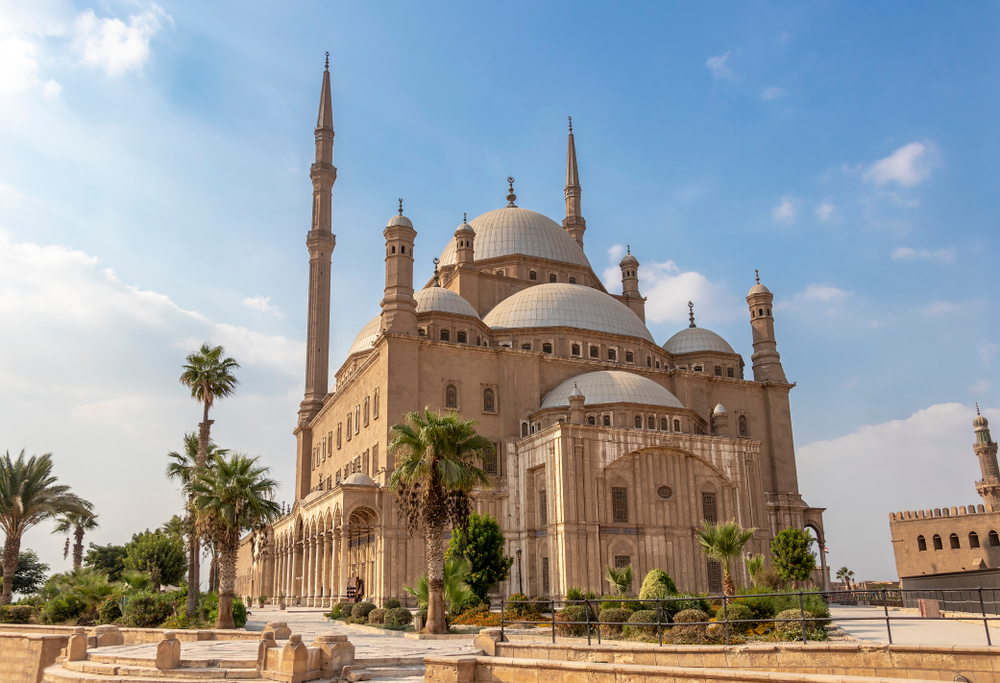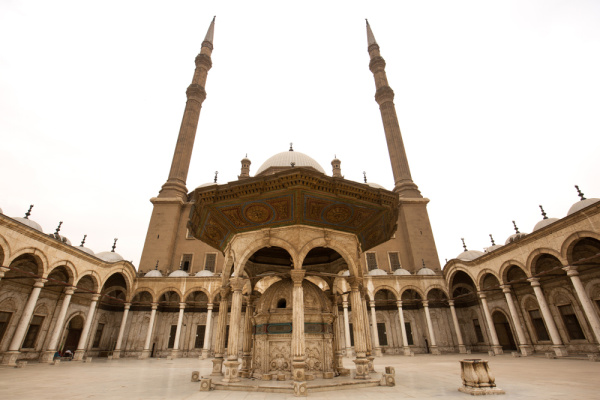The Mosque of Muhammed Ali, Cairo
The Mosque of Muhammed Ali, Cairo
The Mosque of Muhammed Ali, Cairo
-
Hannah
-
Hannah

On a promontory of the Mokattam Hills, overlooking the city, the citadel has been the heart of Cairo for hundreds of years. It was up here that the rulers of the country lived in a most impressive military fortification.
In 1816, Muhammad Ali Pasha – ruler from 1805 to 1848 and founder of modern-day Egypt – lost his son Tusun Pasha. It was in memory of Tusun Pasha that Muhammad Ali Pasha commissioned a new mosque to be built at the citadel, a great and imposing mosque that would stand as a testament of a father’s love. Ultimately, it would also be his resting place; Muhammad Ali Pasha would be laid to rest there in a tomb he commissioned made of Carrara marble.
The mosque was constructed between 1830 and 1857. It was designed in the Ottoman style by architect Yusuf Bushnak, who took inspiration from a mosque in his home city: the Sultan Ahmed Mosque in Istanbul, built in the early 1600s.
From all around Cairo, the domes and towering minarets of the mosque are iconic on the skyline, and from up at the mosque itself, the views over the city are amazing; on a clear day, you can see out to the Pyramids.
The mosque has one big central dome (21 metres across), four smaller ones and four that are semi-circular. Inside, the domes have the most beautiful carvings and gilding.

Limestone is the dominant material in the mosque; some of this was taken from the Great Pyramids at Giza, which were originally covered with casing stones to give a smooth, white appearance. But the mosque is known as the ‘Alabaster Mosque’ because this rock also features prominently. Inside, the lower walls are panelled with alabaster, ‘the Egyptian marble’, as is the courtyard.

The focal point of the courtyard is a marble ablutions fountain.

There is also a copper clock tower, which was a reciprocal gift for Muhammad Ali Pasha from King Louis Philippe I of France. The pasha had given the French an obelisk from the Temple of Luxor, which is in the Place de la Concorde, Paris. Not quite a fair exchange, given the 3,000-year history of the obelisk and the fact that the clock, when it arrived, was found to have been broken in transit!